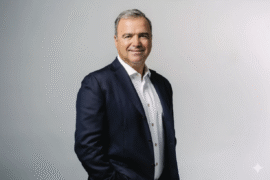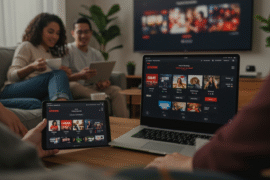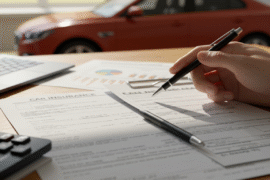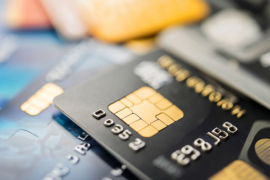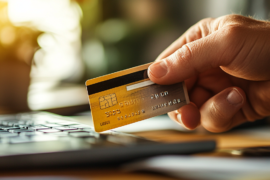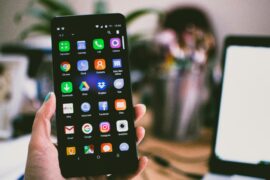This article may contain references to products or services from one or more of our advertisers or partners. We may receive compensation when you click on links to those products or services. Nonetheless, our opinions are our own.
The information presented in this article is accurate to the best of our knowledge at the time of publication. However, information is subject to change, and no guarantees are made about the continued accuracy or completeness of this content after its publication date.
- Understanding Your Living Expenses and Where Your Money Goes
- Creating a Flexible Budget That Adapts to Your Lifestyle
- Tips for Cutting Costs Without Sacrificing Quality of Life
- Tools and Resources to Simplify Your Budgeting Process
- Budgeting Methods to Consider for Effective Management
- Staying on Track: Monitoring and Adjusting Your Budget Regularly
- Budgeting for Unexpected Events and Emergencies
- Conclusion
- Frequently Asked Questions
- Why is budgeting for living expenses crucial?
- What are the main categories of living expenses I should consider?
- How can I track my living expenses effectively?
- What tips can help me stick to my budget?
- How often should I review my budget?
- What should I do if my expenses exceed my budget?
- How can I adjust my budget for fluctuating expenses?
- What role does savings play in a budgeting plan?
- Are there any tools or resources that can help with budgeting?
- Recommended Reads
Understanding Your Living Expenses and Where Your Money Goes
Understanding where your money goes each month is a pivotal step in taking control of your finances. Start by categorizing your living expenses into fixed and variable costs. Fixed fees, like rent or mortgage payments, remain consistent each month, while variable costs—such as groceries, dining out, and entertainment—can fluctuate. Keeping a close eye on these categories can reveal surprising truths about your spending habits. You may be shocked to discover how much you spend on coffee runs or impulse purchases.
To get a clearer picture of your financial landscape, consider using a simple table to outline your monthly expenses:
| Expense Category | Estimated Monthly Cost |
|---|---|
| Housing | $1,200 |
| Utilities | $300 |
| Groceries | $400 |
| Transportation | $150 |
| Entertainment | $200 |
| Other Expenses | $250 |
With this visual portrayal, you can identify your spending patterns and find areas where you can cut back. By tracking your expenses regularly and adjusting your budget accordingly, you’ll be empowered to make more informed financial decisions and reach your financial goals faster.
Essential Categories to Include in Your Budget
When crafting your budget, it’s crucial to identify the essential categories that reflect your daily expenses and financial goals. Start by breaking down your spending into distinct groups to get a clear picture of where your money is going. Consider including the following categories in your budget:
- Housing: Rent or mortgage payments, property taxes, and home insurance
- Utilities: Electricity, water, gas, and internet bills
- Groceries: Food and household items needed for daily living
- Transportation: Fuel, public transit, maintenance, and car insurance
- Healthcare: Medical expenses, insurance premiums, and prescriptions
- Entertainment: Subscriptions, dining out, and leisure activities
- Savings: Emergency fund, retirement savings, and investments
To make tracking easier, consider setting up a simple table to monitor your monthly budget against actual expenses:
| Category | Budgeted Amount | Actual Amount | Difference |
|---|---|---|---|
| Housing | $1,200 | $1,200 | $0 |
| Utilities | $300 | $275 | +$25 |
| Groceries | $400 | $450 | -$50 |
| Transportation | $200 | $175 | +$25 |
| Healthcare | $150 | $200 | -$50 |
| Entertainment | $100 | $120 | -$20 |
| Savings | $250 | $250 | $0 |
By structuring your budget in this way, you empower yourself to understand financial patterns, make necessary adjustments, and ultimately work toward your financial goals effectively.
Creating a Flexible Budget That Adapts to Your Lifestyle
Creating a flexible budget is less about strict rules and more about developing a system that suits your unique circumstances. Start by clearly understanding your essential living expenses versus discretionary spending. Identify fixed expenses such as rent, utilities, and insurance, then categorize your variable costs, like dining out and entertainment. This allows you to see where to adjust your spending without compromising your quality of life. The goal is balance.
Next, consider setting aside a portion of your income for unexpected expenses or opportunities, making your budget adaptable to twists and turns. Here are some tips to ensure your budget remains flexible:
- Review and adjust monthly: Analyze your spending patterns regularly to make necessary changes
- Prioritize your goals: Set clear financial objectives for both short- and long-term spending
- Embrace technology: Use budgeting apps to track your expenses in real-time, ensuring alignment with your flexible plan
Incorporating these strategies into your budget can help you feel more in control of your finances. Here’s a simple budgeting overview to illustrate how versatility can help you:
| Category | Fixed Expenses | Variable Expenses |
|---|---|---|
| Housing | $1,200 | N/A |
| Utilities | $200 | N/A |
| Groceries | N/A | $300 |
| Entertainment | N/A | $150 |
| Emergency Fund | N/A | $200 |
Tips for Cutting Costs Without Sacrificing Quality of Life
Cutting costs doesn’t mean settling for a lower quality of life. You can adopt several strategies that allow you to save while still enjoying the things you love. Here are some practical methods that can ease your budget:
- Assess Your Subscriptions: Review all your monthly subscriptions and memberships. Cancel services you rarely use and consider switching to free or lower-cost alternatives.
- Meal Planning: Plan your meals weekly to reduce impulse purchases and food waste
- Buy in Bulk: For frequently used items, bulk purchases often result in long-term savings
- Opt for Generic Brands: Store brands often offer the same quality at a lower price
Establishing and sticking to a monthly budget also promotes awareness of your spending habits. Here’s an example of how you can track your expenses:
| Category | Budgeted Amount | Actual Amount |
|---|---|---|
| Groceries | $300 | $280 |
| Utilities | $150 | $145 |
| Entertainment | $100 | $80 |
By regularly reviewing and adjusting your budget, you’ll not only cut costs but also gain a clearer picture of your financial health. This will make it easier to allocate funds for savings or leisure activities that truly enhance your life.
Tools and Resources to Simplify Your Budgeting Process
Budgeting doesn’t have to feel overwhelming, especially with the right tools and resources. Think of your budgeting process as a journey—having the right aids can make all the difference. Some popular budgeting apps include:
- You Need a Budget (YNAB): Helps you allocate every dollar and encourages saving for the future
- Mint: A free app that merges your accounts and tracks spending and bills
- EveryDollar: Created by Dave Ramsey, allows you to build a monthly budget in minutes
Simple spreadsheets can enhance your budgeting experience. Here’s an example:
| Category | Budgeted Amount | Actual Amount | Difference |
|---|---|---|---|
| Housing | $1,200 | $1,150 | $50 |
| Utilities | $300 | $280 | $20 |
| Groceries | $400 | $420 | -$20 |
Using these tools with a proactive mindset sets you up to master your budgeting process effectively.
Voted "Best Overall Budgeting App" by Forbes and WSJ
Monarch Money helps you budget, track spending, set goals, and plan your financial future—all in one app.
Get 50% OFF your first year with code MONARCHVIP
Budgeting Methods to Consider for Effective Management
Zero-Based Budgeting:
Assign every dollar a job so all income is allocated to expenses, savings, or debt repayment.
- The 50/30/20 Rule: States one should allocate 50% of income to needs, 30% to wants, and 20% to savings and debt payments.
- Envelope System: Divide your cash into envelopes for different categories. To manage spending visually, spend only from each envelope’s allocation.
- Pay Yourself First: Set aside savings before paying bills or spending on other items, making saving a consistent habit.
- Automate Savings: Set automatic transfers from checking to savings accounts to ensure consistent saving.
What is a 50/30/20 budget?
A 50/30/20 budget allocates 50% of your income to needs, 30% to wants, and 20% to savings and debt. This method balances present expenses with future security.
Envelope Budget
The envelope budgeting method involves separating cash into envelopes labeled by category. This hands-on approach fosters awareness and helps prevent overspending in lower-priority areas.
Staying on Track: Monitoring and Adjusting Your Budget Regularly
Tracking your finances is an ongoing process. Set aside time monthly to review your budget and spending. Compare budgeted versus actual expenses to identify trends and make informed adjustments.
- Review categories for relevance
- Adjust for life changes like income or family size
- Set attainable goals and adjust as needed
Use a simple table for ongoing monitoring:
| Category | Budgeted Amount | Actual Spending | Difference |
|---|---|---|---|
| Groceries | $300 | $350 | -$50 |
| Utilities | $150 | $130 | +$20 |
| Entertainment | $100 | $80 | +$20 |
Budgeting for Unexpected Events and Emergencies
Budgeting isn’t static. Regular reviews help you adapt to life changes and improve your financial outlook. Emergency budgeting is essential.
How do I budget for unexpected events?
Set aside a portion of income for emergencies. Aim to save 3–6 months’ worth of expenses and use this fund only when necessary.
Conclusion
Budgeting living expenses is a dynamic, ongoing process. Regularly reviewing and adjusting your budget ensures you stay on track toward your financial goals. Saving for unexpected events and using tools like apps or spreadsheets can strengthen financial stability. Flexibility, discipline, and consistency are key to a secure financial future.
Frequently Asked Questions
Why is budgeting for living expenses crucial?
Budgeting for living expenses is crucial because it helps you gain control over your finances, meet your essential needs, and set aside money for savings and emergencies. It allows you to prioritize spending and make informed financial decisions.
What are the main categories of living expenses I should consider?
The significant categories typically include housing, utilities, groceries, transportation, healthcare, entertainment, debt payments, subscriptions, and savings contributions.
How can I track my living expenses effectively?
You can track expenses using budgeting apps, spreadsheets, or pen and paper. The key is to regularly record and categorize each expense, then review your entries to spot patterns and opportunities for improvement.
What tips can help me stick to my budget?
Set realistic goals, review your budget monthly, use cash for discretionary spending, and build an emergency fund to avoid financial derailments.
How often should I review my budget?
You should review your budget at least once a month and after major life changes to ensure it aligns with your current financial situation.
What should I do if my expenses exceed my budget?
Identify non-essential expenses to reduce or eliminate and consider boosting your income through side work or freelance opportunities to close the gap.
How can I adjust my budget for fluctuating expenses?
Create a baseline using past months’ data, and allocate a flexible amount considering seasonal changes. Maintain a buffer for surprise expenses.
What role does savings play in a budgeting plan?
Savings are vital for covering emergencies and achieving long-term goals. Allocate a portion of your income to savings alongside regular expenses to build financial resilience.
Are there any tools or resources that can help with budgeting?
Yes. Budgeting apps like Mint, YNAB, or EveryDollar; spreadsheets; and financial education resources all support effective budgeting.

Reviewed and edited by Albert Fang.
See a typo or want to suggest an edit/revision to the content? Use the contact us form to provide feedback.
At FangWallet, we value editorial integrity and open collaboration in curating quality content for readers to enjoy. Much appreciated for the assist.
Did you like our article and find it insightful? We encourage sharing the article link with family and friends to benefit as well - better yet, sharing on social media. Thank you for the support! 🍉
Article Title: The Ultimate Guide to Budgeting Your Living Expenses
https://fangwallet.com/2025/03/22/budgeting-living-expenses/The FangWallet Promise
FangWallet is an editorially independent resource - founded on breaking down challenging financial concepts for anyone to understand since 2014. While we adhere to editorial integrity, note that this post may contain references to products from our partners.
The FangWallet promise is always to have your best interest in mind and be transparent and honest about the financial picture.
Become an Insider

Subscribe to get a free daily budget planner printable to help get your money on track!
Make passive money the right way. No spam.
Editorial Disclaimer: The editorial content on this page is not provided by any of the companies mentioned. The opinions expressed here are the author's alone.
The content of this website is for informational purposes only and does not represent investment advice, or an offer or solicitation to buy or sell any security, investment, or product. Investors are encouraged to do their own due diligence, and, if necessary, consult professional advising before making any investment decisions. Investing involves a high degree of risk, and financial losses may occur including the potential loss of principal.
Source Citation References:
+ Inspo
There are no additional citations or references to note for this article at this time.
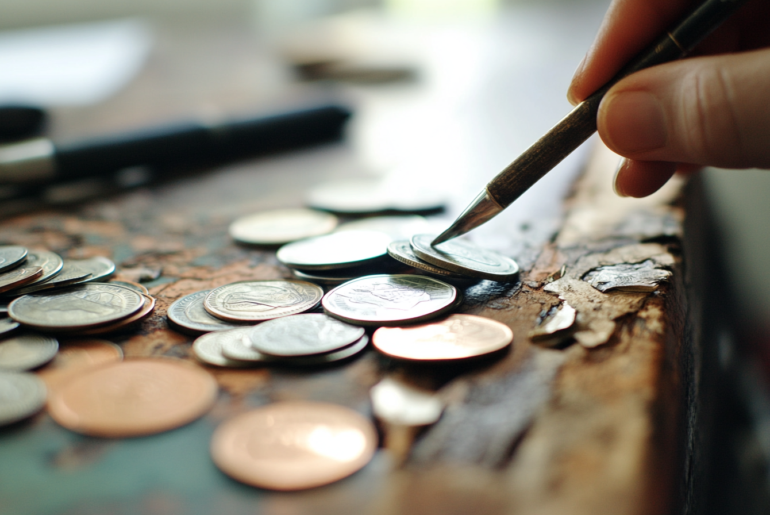
![How to Hire Fintech Software Developers [Cost & Factors] fintech software engineers](https://fangwallet.com/wp-content/uploads/2025/03/fintech-software-engineers-small.png)














